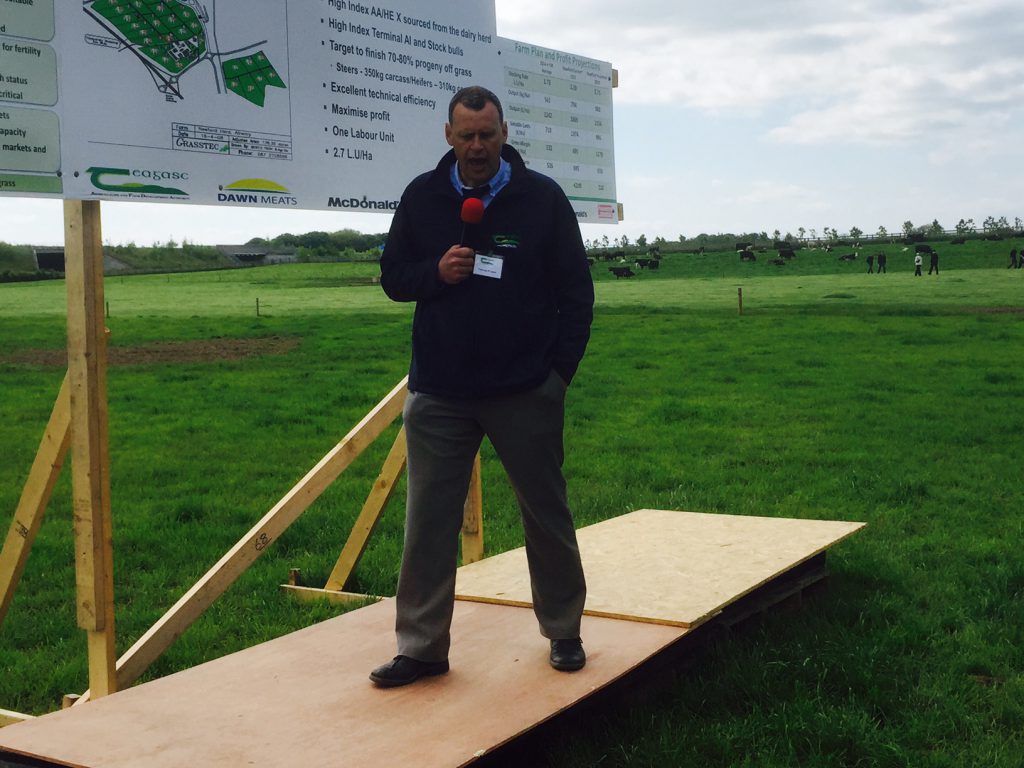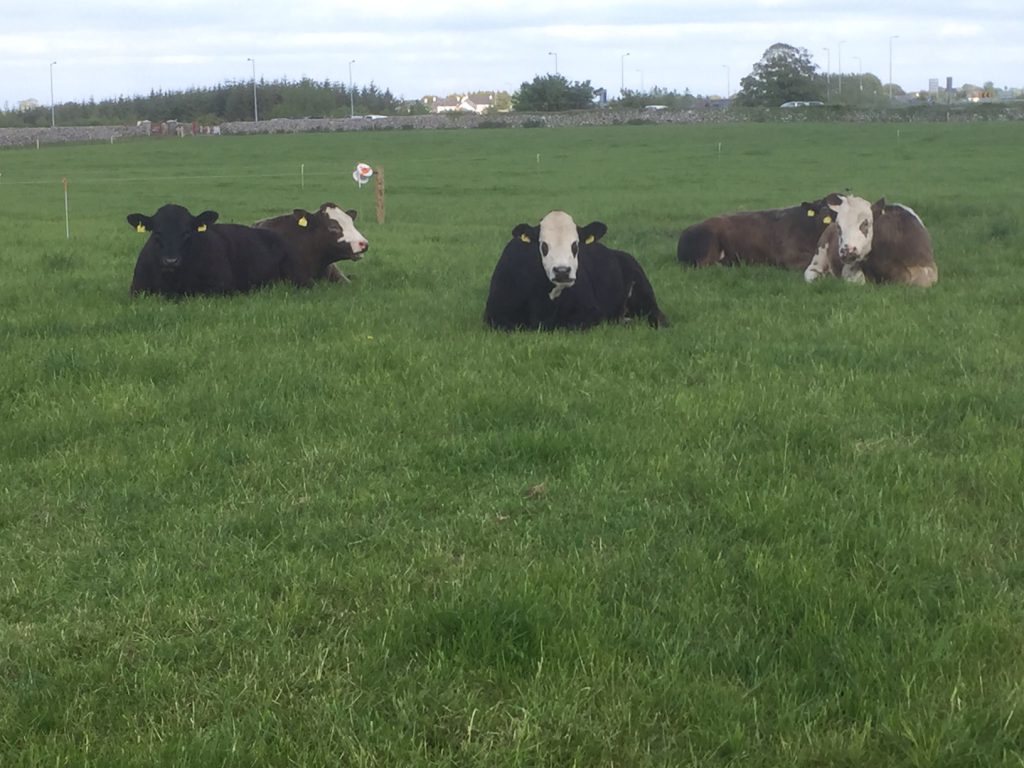Over 2,000 farmers made the journey to Athenry yesterday to see the behind the scenes running of Teagasc’s Newford suckler-to-beef farm.
One of the key objectives on the farm is to see are suckler cows sourced from the dairy herd capable of leaving enough money to result in a profitable suckler-to-beef enterprise.
Speaking at the open day, the Head of Livestock Systems Department in Teagasc, Padraig French said that the main aim of the farm was to cover the fixed and variable costs along with leaving a wage of €35,000 for the farm manager.
In total, French said that the farm needs to make a return of €105,000 on an annual basis to cover all of these costs.
He said that to achieve this the farm needs to make a gross margin of €1,200-1,300/ha, which can be achieved by selling 330kg/ha of beef with 85% of the cattle’s diet coming from grass.
Suckler cow type
The type of suckler cow on the Newford farm varies from most suckler enterprises in Ireland, as all of the 100 cow herd are Angus crosses sourced from the dairy herd.
The Farm Manager Matthew Murphy said that the Newford system is all about driving efficiency and reducing the reliance on factors farmers cannot control, like the price of bought-in feed.
The Farm Manager continued to say that the progeny of the cows may be lighter and produce lighter carcasses, but farmers will more than makeup for it through the lower cost of production.
“Everyone visiting the farm today has been impressed by how well the calves are looking and their rapid weight gain,” he said.
Replacements on the Newford suckler farm
Murphy also discussed the replacement policy on the farm.
All of the cows on the Newford farm are selected on the basis of milk yields and fertility traits, which minimises the need for the use of bought in concentrates.
He said that all of the replacement heifers are sourced from three different dairy farms in Co. Cork and are genotyped to identify their sire and to get a rating for the Beef Data and Genomics Programme (BDGP).
The replacement heifers coming into the herd in 2017 have a replacement index of €131, while the average mature cow in the herd has a value of €104.
The mature cows in the herd also have the potential to produce 15kg more milk than the average Irish suckler cow and they also have nearly a two day shorter gestation.
And as a result, this year’s crop of calves are on track to reach 50% of their mothers weight within six months. This has been helped by the recent improvement in weather and a surge in grass growth on the farm.
However, the higher milk production does cause some problems when it comes to weaning the calves, he said, and all cows on the farm receive a dry cow treatment to reduce the risk of mastitis.
The farm manager also spoke about the breeding policy on the farm, saying that only proven easy calving bulls are used.
“At first, I was strongly against the idea of using AI from a labour point of view.
“But when I thought about the difficult calvings last year, they were all after a stock bull with a low calving ease reliability,” he said.
The breeding season on the farm lasts for 10-12 weeks, Murphy said, with cows bred by artificial insemination during the first seven weeks of the breeding season, while stock bulls are used to mop up the remaining cows.
The farm manager said that cows are AI’d once a day, and are checked four times each day for signs of heat. Murphy said he checks the cows for four 20 minute periods each day to pick up any cows bulling. The farm also uses a teaser bull fitted with a chinball harness to identify in heat cows.
He also said that most of the cows in the herd receive one straw, but if a cow is showing signs of heat the following day she is served again.
“The straws only cost €8-10 and I would rather have the cow in-calf that worry about the cost of the straw,” Murphy said.
To meet the production targets of the farm, Teagasc’s Adam Woods said that the farm needed to grow 16t of dry matter grass each year and to have cattle at grass for more than 200 days.
But, he said there were in a lucky position as the majority of the fields on the farm were in index 3 and 4 in terms of Phosphorous. Woods continued to say that the pH of the farm was just over 6.
However, he said a substantial investment was needed to improve the grazing infrastructure and water troughs on the farm.
Since the farm was established in 2015, just over €26,000 had been spent on making improvements to the roadway, paddock fences and water troughs.
“There has been a lot of money spent, but that money will be generated from the extra production over the next couple of years,” he said.
Newford breeding policy
AI usage on the farm
Click here to view gallery:
Grass growth on the farm











